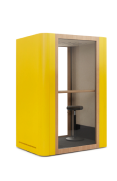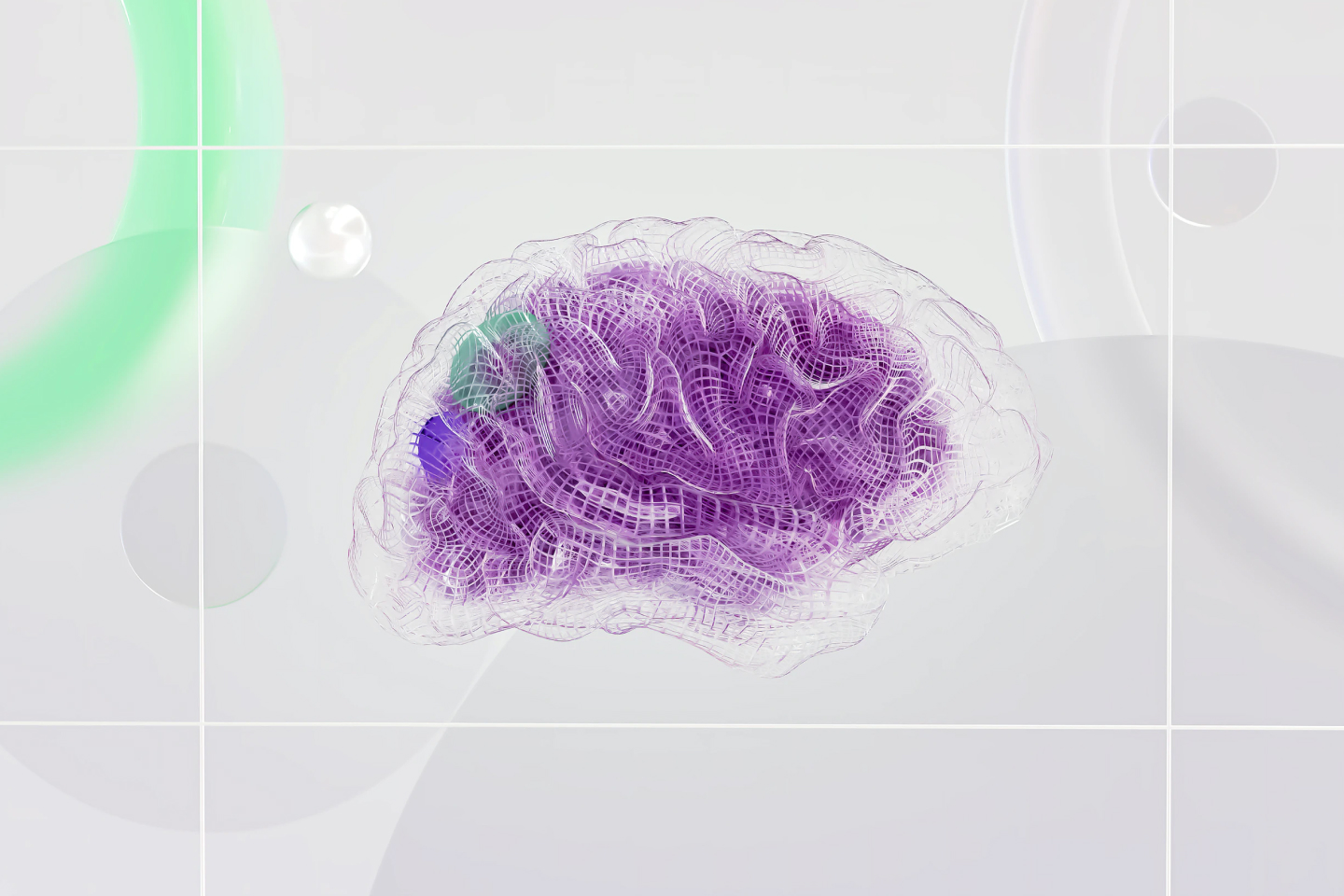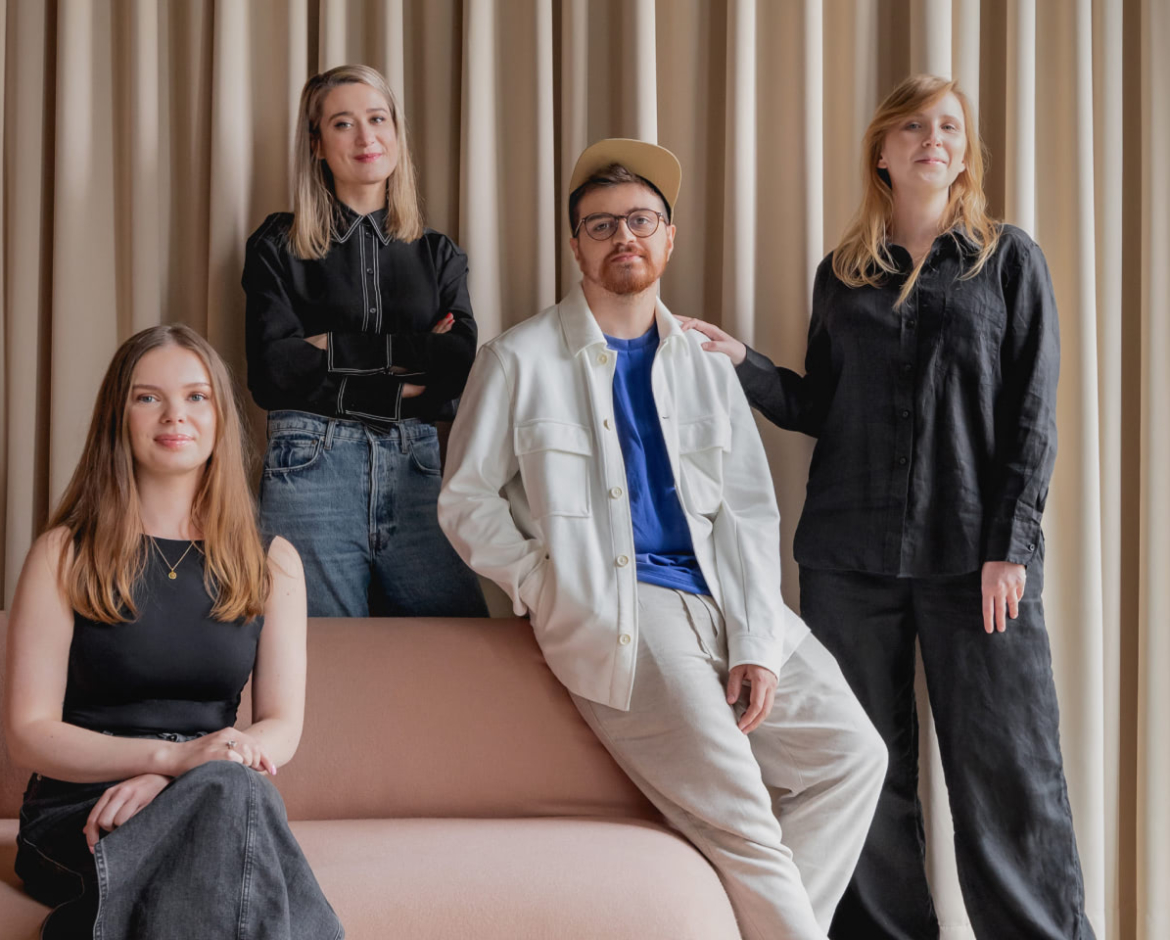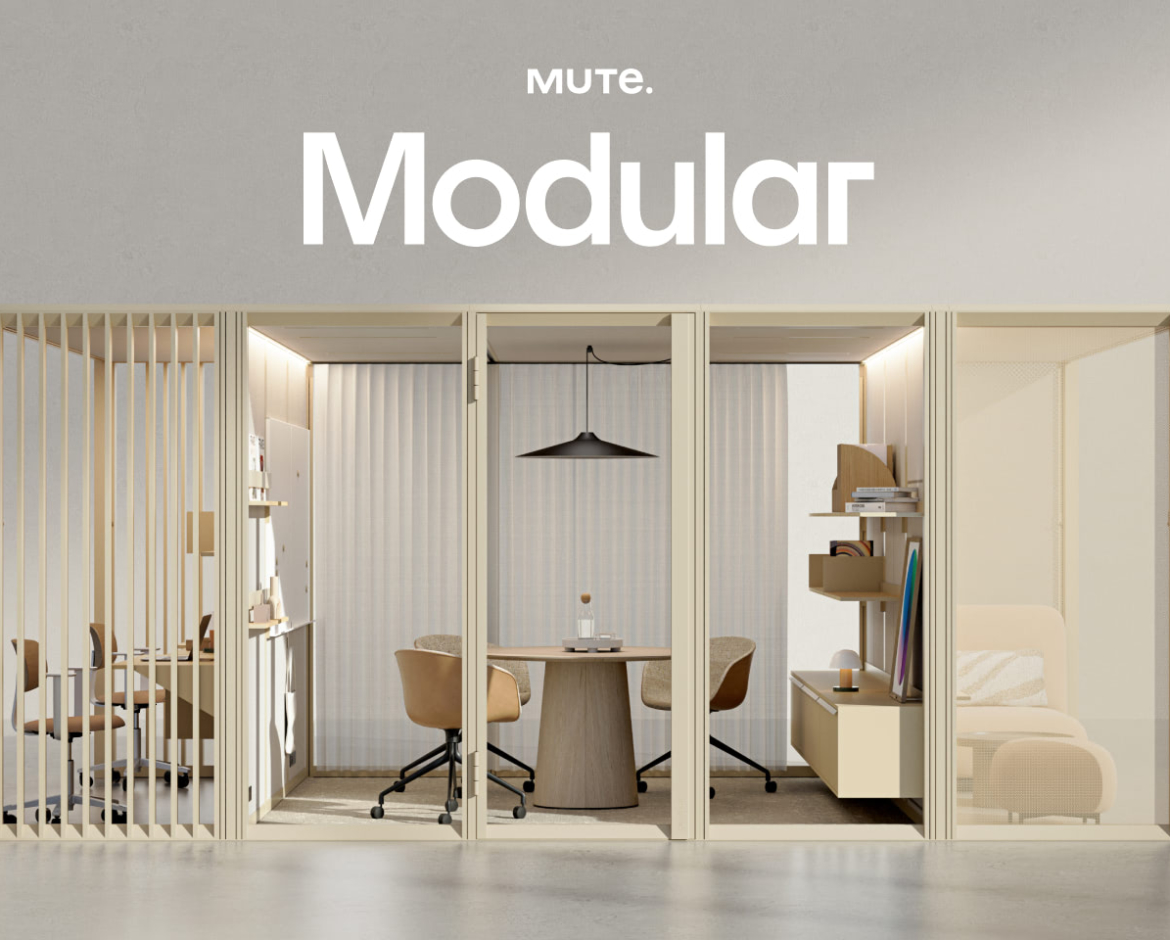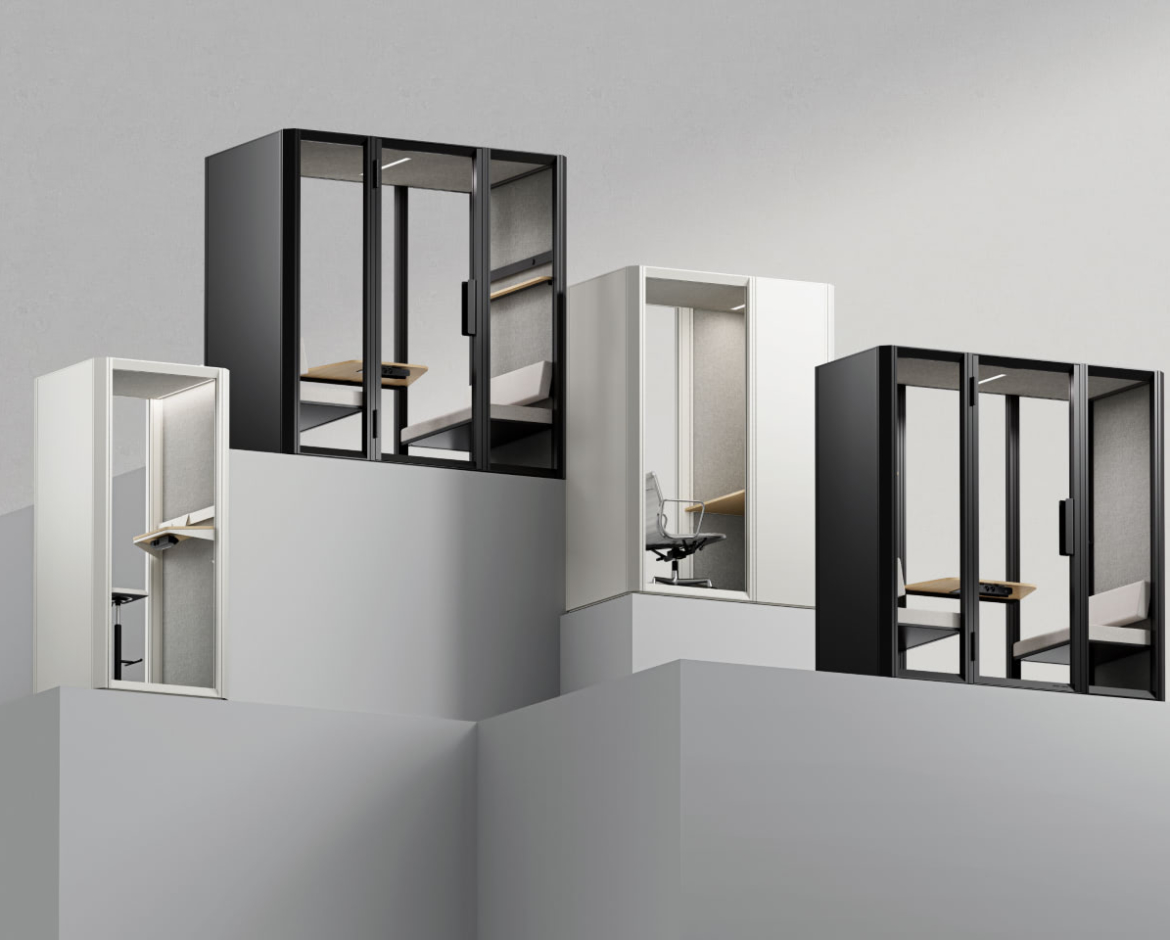How can mental well-being be promoted at work? Neuroarchitecture provides some clues.
We’ve previously written about how office design can improve focus. We also wrote about the “Eudaimonia Machine” concept, an office space designed to encourage “deep work.” These ideas in action have to do with a field of study called “neuroarchitecture,” which explores how buildings and public spaces impact our mental state. That means architects holistically design spaces in a way that considers how humans within a space react to it. When a person walks into the building or goes about using one of its spaces, does the person feel happy? Calm? Focused? Motivated? Inspired? This merging of human emotion and architectural design make neuroarchitecture especially relevant for office, as people utilize various areas for different purposes throughout the day.
Humans have been awed by space and architecture for millennia – think the Parthenon, the massive cathedrals of Europe, the mind-blowing scale of the pyramids – but the fascination with modern architecture’s influence on human emotions and neurological response came from an unlikely place.
When Jonas Salk, the doctor and researcher who invented the polio vaccine, hit a dead end in his experimentation, he took a trip to Italy. The change in his environment, along with the beautiful architecture he encountered there, helped him get out of his creative rut and solve the challenges that had previously blocked him. When, years later, Salk planned to build a research institute in La Jolla, California, he worked with architect Louis Kahn to develop a space inspired by his experience in Italy. The campus was designed to fit seamlessly into its natural environment and to promote serenity, collaboration, innovation, and infinite discovery. The Salk Institute has become a well-recognized architectural marvel and a coveted research facility.
While not all of us have an office on the cliffs of the California coast, the architectural principles used at the Salk Institute and in the ever-growing field of neuroarchitecture can be implemented by anyone. In this article, we’ll cover how you can apply neuroarchitecture to your own workspaces to promote mental well-being.
1. Big spaces, big ideas
It’s well-documented that taking a walk or changing up your environment can help you get out of a creative rut. Furthermore, tall and open spaces also help spark creativity. Researchers believe that space and creativity are connected because when we expand our depth perception, we also open ourselves up to fresh ideas and perspectives. Workspaces with expansive ceilings and lots of light, airy open spaces provide a feeling of “infinite possibilities.”
The second key in designing an office space that promotes creativity is to understand that employees need space to roam and feel a sense of freedom. As one researcher told Forbes, “The important thing is the freedom to move without external constraints.” You can simulate this feeling by providing a “diverse experience” around the office, with a variety of places to work. When employees can move around and change up their environment, they get a sense of movement and possibility.
One Stanford University study noted that walking indoors or outdoors can boost creative thinking. That means that even when employees don’t have time to take a walk around the block on a particularly busy day, providing the opportunity to move from one space to another – rather than glued to their desk – could be especially important. Moreover, research published in Nature by professors at NYU and the University of Miami found that “new and diverse” experiences generate more feelings of happiness which, in turn, is correlated to brain activity. Therefore, the key is in freedom of movement throughout a space.
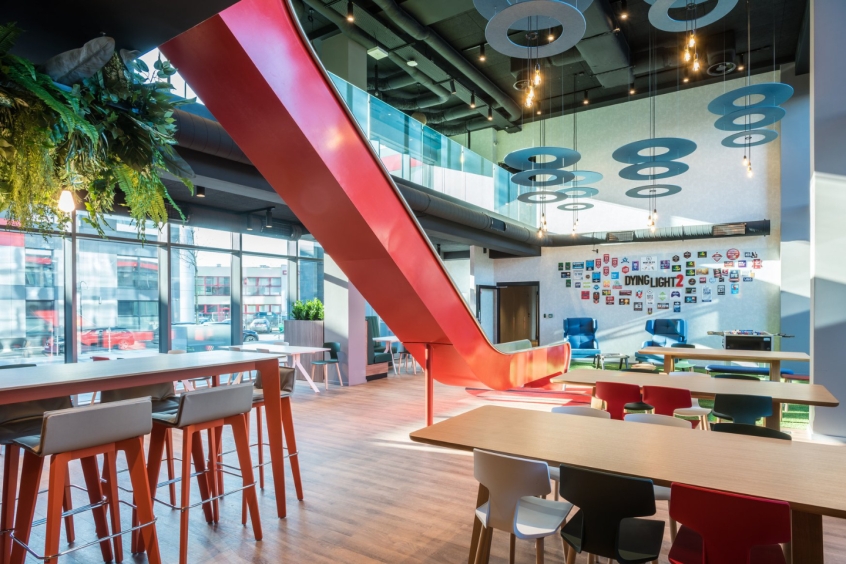
Tall ceilings and large windows accentuate the Techland office in Wroclaw.
2. Cozy and calm
On the flip side, cozier spaces seem to promote analytical thinking and attention to detail. As one researcher put it, that’s why it may be beneficial to have low ceilings in operating rooms – a surgeon needs to be completely focused on the task at hand. So, after generating biggest and boldest ideas in a tall and open space, hunkering down in a smaller, cozier room to really get down to business might work in your favor.
But it’s not only about providing smaller, more private spaces for this focused work. Colors, light, and temperature can also affect one’s productivity and focus. Many studies have shown that colors, building materials, and light all play a role in learning, concentration, and memory. Here are a few tips on design for focused work:
→ Keep the colors in these spaces cool or neutral. Greens, blues, and even purple, can help people focus and impart people with a sense of calm. Red, on the other hand, tends to be associated with stronger emotions that may not be as favorable for focus.
→ Think through texture and material when designing the space. One study on the impact of design on learning spaces found that steel, concrete, and glass could improve attention, while wood, concrete and glass could improve memory. Based on these results, you might consider what, exactly, you’d like a space to be used for and then decide on the appropriate surroundings. Even if you’re not building a space from scratch, you could consider these materials in the type of furniture or art and decor you choose for the space.
→ Bring nature inside. A group of researchers from the University of North Florida demonstrated that contact with nature during the workday can reduce stress—another key to relaxation and focus. And, when you just need a private moment to yourself, a small space with warm light, plants, or images of nature can help.
→ Consider the furniture—that’s right, even furniture style can impact mental well-being. At least one study from Oregon State University suggested that soft-edged, “curvilinear” furniture elicited more feelings of relaxion and calm than sharp-edged furniture.
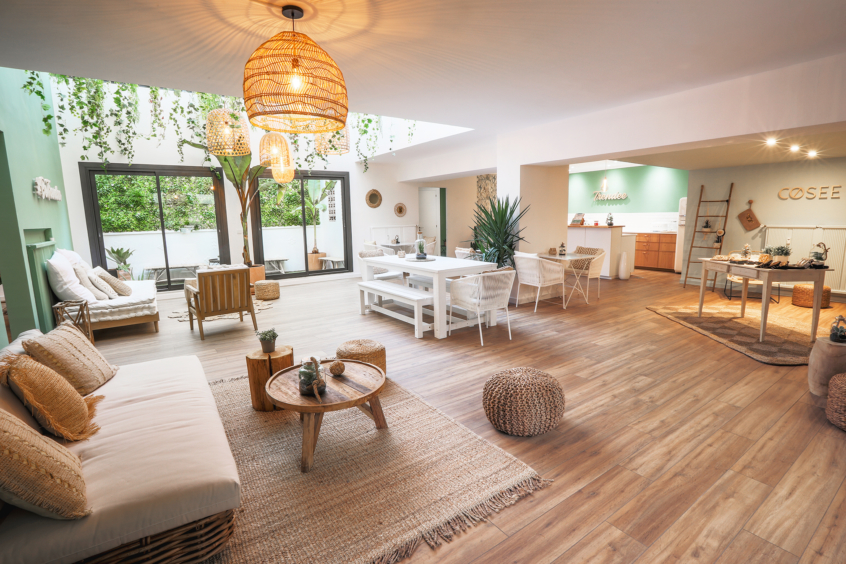
This coworking space in Cannes shows what some organic-inspired materials, plants, and natural light
can do to instill a sense of coziness and calm.
3. A Note on Lighting
It can be difficult to pinpoint exactly what type of lighting is best for what tasks. Although research has been done on how lighting can affect workers, researchers have encountered challenges in its exact measurability. In addition, people have a wide range of personal preferences (or physiological needs) when it comes to vision and lighting.
However, one thing is certain: access to proper ambient lighting (whether natural or artificial) can improve work productivity and well-being in the workplace. And, unsurprisingly, access to windows that allow employees to look out into the distance are highly beneficial. The easiest way to make sure employees have access to appropriate lighting is to design an office space that takes each space’s desired functionality into consideration.
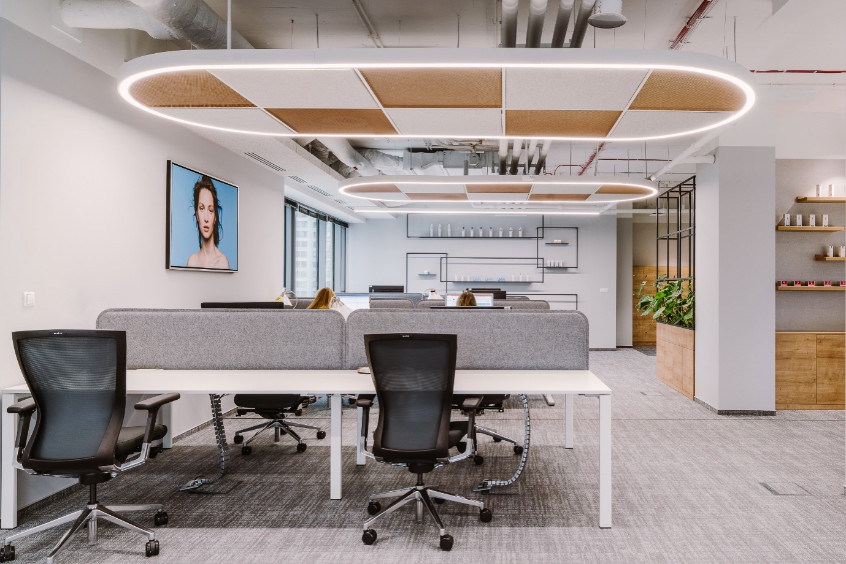
Custom-designed suspended light fixtures in the L’Oreal office provides both sound-absorbing properties
and overhead lighting meant to instill a sense of calm.
Neuroarchitecture is still a developing field. There’s much more research to be done about how design and architecture can actively facilitate mental well-being. As a fascinating intersection of psychology and design, neuroarchitecture has critical implications for the “science of work.” The more we can understand about how materials, sound, lighting, and space impact how we work and how our brains react to these various environmental factors, the better equipped we will be to do our best work. Investing in spaces designed to prioritize employees’ well-being pays dividends far into the future. When people have a variety of spaces for creativity, productivity, calm, and refreshment, they’ll always have a place to put their best foot forward.
